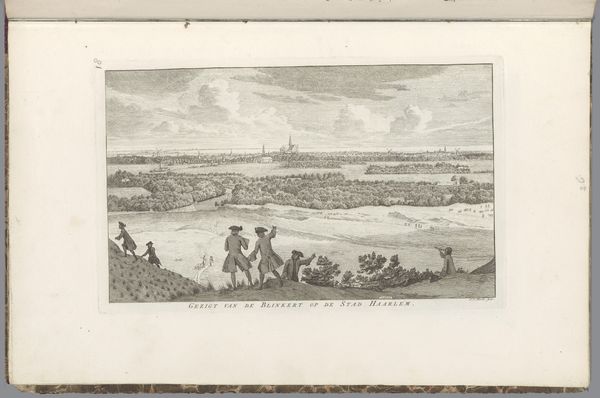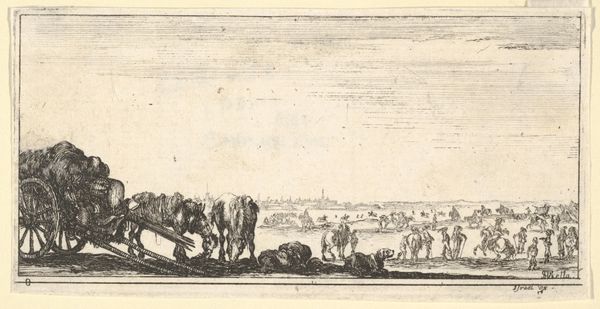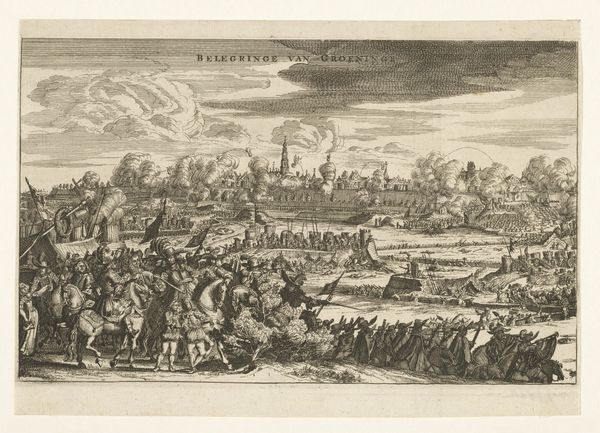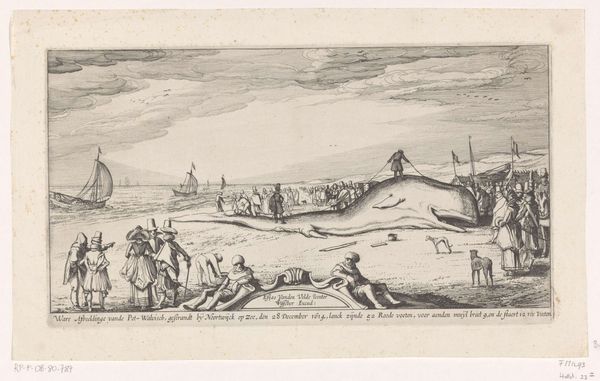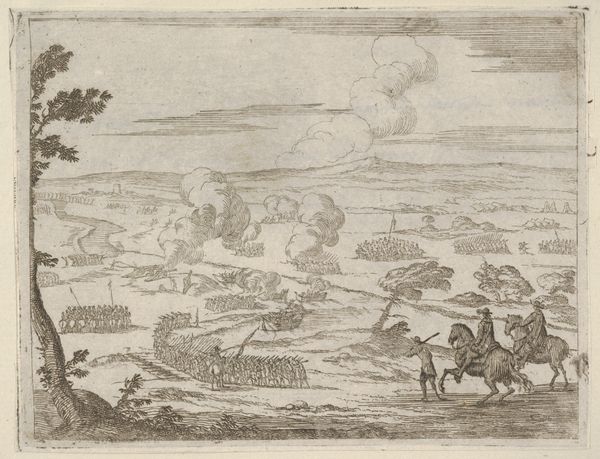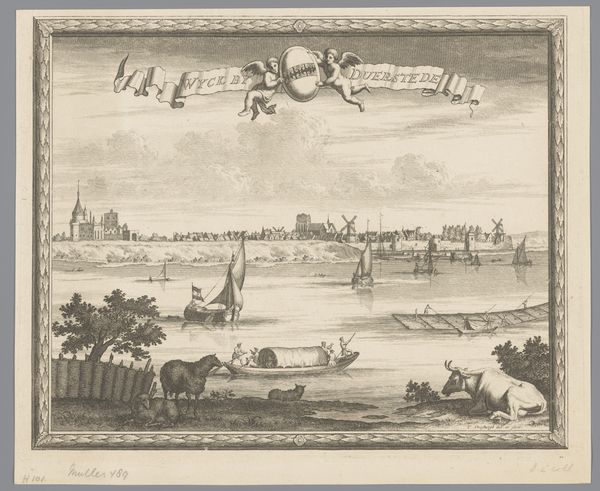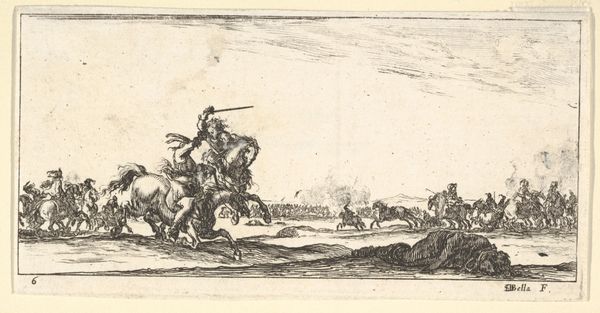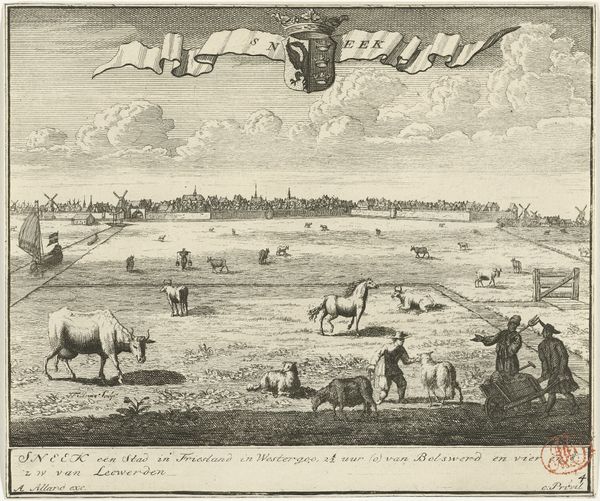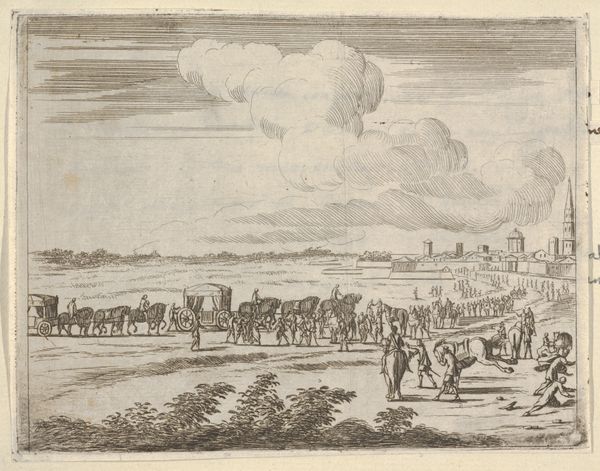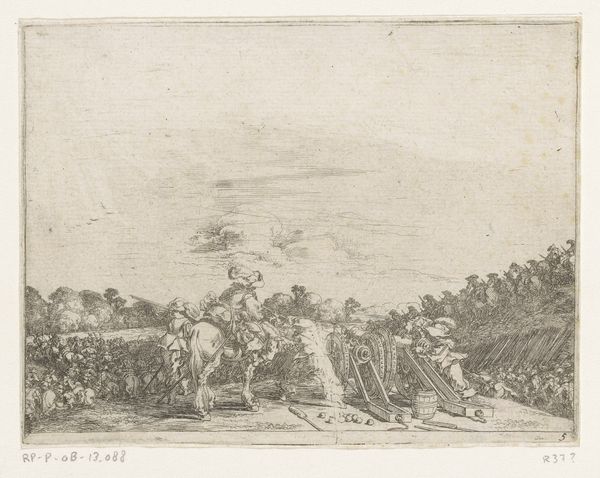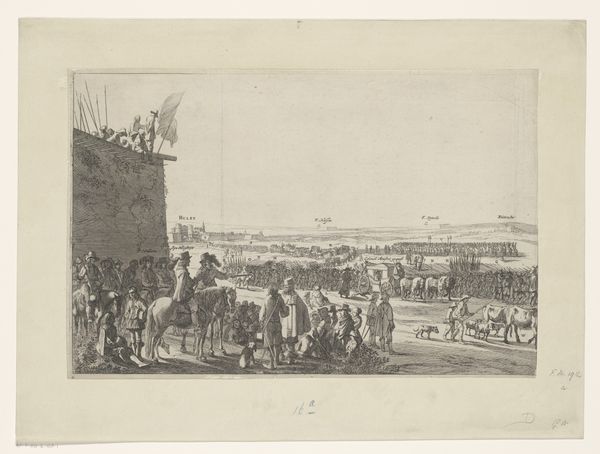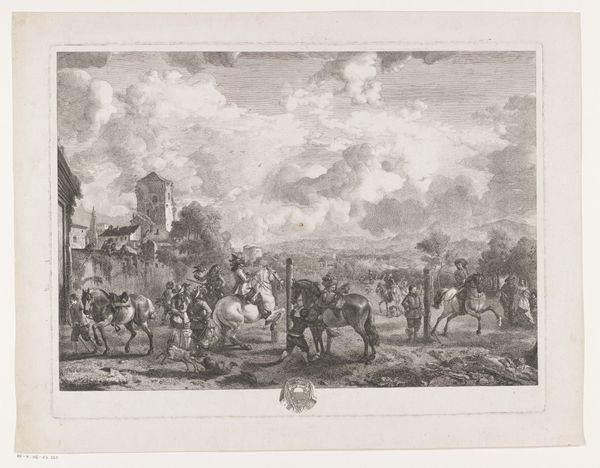
Gezicht op Breda vanuit het noordwesten (linker blad) 1645
0:00
0:00
print, etching, graphite
#
weapon
#
baroque
# print
#
pen sketch
#
etching
#
landscape
#
graphite
#
cityscape
#
history-painting
Dimensions: height 207 mm, width 325 mm
Copyright: Rijks Museum: Open Domain
Curator: Abraham Dircksz. Santvoort created this etching and graphite print entitled, "View of Breda from the Northwest" in 1645. Editor: Immediately, the cannon and armaments give it such a war-like tone, contrasting against what seems to be a serene, organized city-state in the background. It's fascinating. Curator: Absolutely. The print depicts a panoramic view of Breda, now in the Netherlands, a city with a complicated history of sieges and shifting political control, represented by the weapons, front and center. These symbolize power, but perhaps also conflict. Editor: I’m struck by the figure draped amidst the weapons; she seems allegorical. Is she meant to represent the city itself? She certainly commands attention, drawing my eyes amidst the surrounding chaos. What do we know of the classical symbolism employed here? Curator: Your observation is sharp. The figure embodies an allegorical representation of the city of Breda; her posture implies she is reclining peacefully even among all the tools of war. Her very presence speaks to Breda's resilience in the face of ongoing political and social challenges. Editor: The layering of symbols then tells a story. The inclusion of Latin text further enriches the scene. Does the inscription allude to a particular event or a ruler associated with Breda during this period? What power structures are visible? Curator: Precisely. The inscription "NOBILI AMPLISSIMO D. SATRO. A. MAGIS VERIS SPECTAT" roughly translates to “Noble and most excellent Mr. Satro sees what is truly great". Considering the Thirty Years' War and the Dutch Revolt, this was an expression of civic pride but also perhaps, a message to potential invaders. Editor: The meticulous rendering of Breda itself fascinates me, but also that open space. You have military symbols in the front with a more commercial landscape, of sorts, in the middle, under the orderly city and windmills in the back. Curator: And the landscape behind becomes part of this claim to a powerful past and future! It suggests an ideal order. And looking closely, you'll note even the clouds and sky play a significant part. Nothing seems to be present without reason in the composition. Editor: It certainly feels like a loaded image! I had thought I'd only see cannons, but now the landscape in total speaks of the resilience, even resistance of Breda, doesn’t it? Curator: Indeed, Santvoort captures not just a cityscape but the spirit and claims of Breda at a crucial juncture in its history, rendered in complex symbolic terms.
Comments
No comments
Be the first to comment and join the conversation on the ultimate creative platform.
